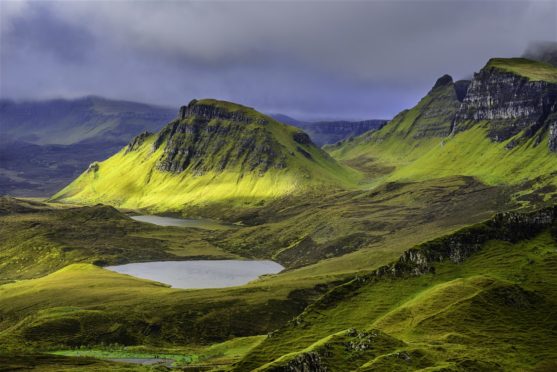Scientists have made an explosive discovery about a volcanic eruption on Skye which is likely to have caused major changes in the world’s climate.
Researchers from Scotland, Sweden and England have linked the explosion, which took place 56 million years ago, to a prehistoric spike in global warming.
It is the first time a large-scale explosive eruption has been confirmed in Scotland.
>> Keep up to date with the latest news with The P&J newsletter
Rob Ellam Professor of Isotope Geochemistry at Glasgow University, based at the Scottish Environmental Research Centre said: “We are saying that the eruption we have identified is rather bigger than anyone has ever imagined before.
“We have known there were volcanoes in the Hebrides and in Skye for a long time.
“We previously thought most volcanic activity in places like Skye was lava flow similar to what you see in Hawaii today. We have found geological evidence there was also very explosive volcano activity similar to what you might get in Krakatau in 1883.”
It was a massive climate disturbance that caused global temperatures to shoot up by 8C, four times the increase predicted to create huge problems for present-day humans.
Writing in the journal Scientific Reports, the researchers present evidence of an explosion in the same league as the eruption of Krakatau in 1883.
It was one of the biggest volcanic catastrophes in recorded history in which the shock waves travelled round the world three and a half times.
The huge amounts of particles thrown into the atmosphere caused global temperatures to fall for several years as the ashes blocked sunlight.
The research was a collaboration involving the University of St Andrews, the Scottish Environmental Research Centre at East Kilbride, Sweden’s Uppsala University and Durham University.
They found their evidence in pitchstones, which are created when volcanic lava or magma cools quickly. It creates a glassy rock. Much later, it was prized by Stone Age humans.
The researchers found pitchstone outcrops from a single, huge eruption 18 miles apart on Sgùrr of Eigg and the Skerry of Òigh-sgeir (Hyskeir) in the Inner Hebrides.
They say both sets of stones had an identical composition and came from the same place – Skye.
Among the methods they used to identify and date the pitchstones was isotope geochemistry which measures the relative levels of isotopes in rock samples.
